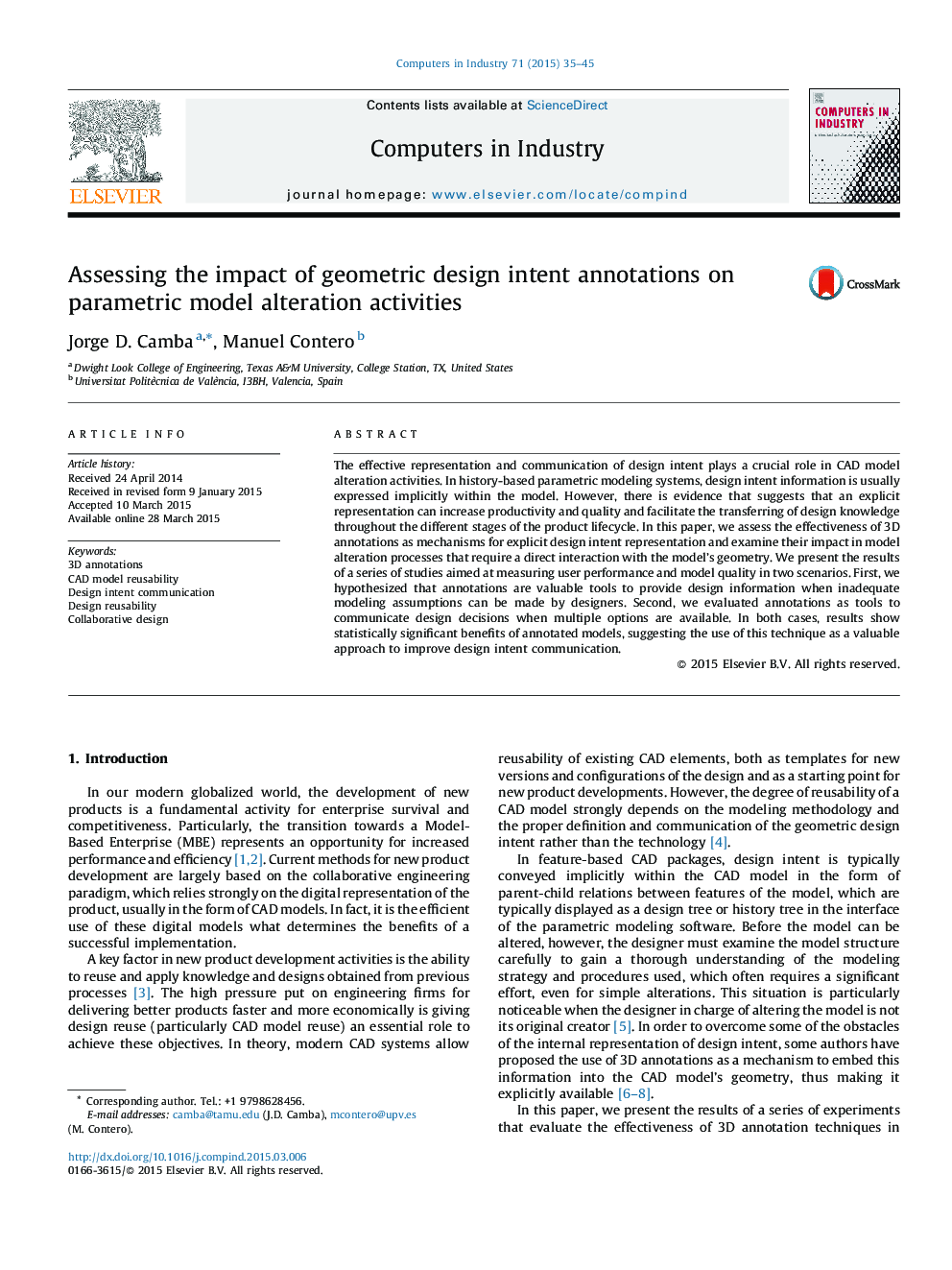| Article ID | Journal | Published Year | Pages | File Type |
|---|---|---|---|---|
| 509002 | Computers in Industry | 2015 | 11 Pages |
•We review the concept of reusability in parametric modeling and its connection with design intent communication in the context of the Model-Based Enterprise (MBE).•We examine the limitations of the annotation tools available in current Model-Based Definition standards.•We empirically evaluate the impact of design intent annotations on model alteration activities.•We present the results of two experiments where we compare annotated vs. non-annotated models in terms of reusability and design communication.•The use of annotations improves design intent communication as long as proper interaction mechanisms are in place.•Visual clutter is an important problem when the user has to interact with an extensively annotated model.
The effective representation and communication of design intent plays a crucial role in CAD model alteration activities. In history-based parametric modeling systems, design intent information is usually expressed implicitly within the model. However, there is evidence that suggests that an explicit representation can increase productivity and quality and facilitate the transferring of design knowledge throughout the different stages of the product lifecycle. In this paper, we assess the effectiveness of 3D annotations as mechanisms for explicit design intent representation and examine their impact in model alteration processes that require a direct interaction with the model's geometry. We present the results of a series of studies aimed at measuring user performance and model quality in two scenarios. First, we hypothesized that annotations are valuable tools to provide design information when inadequate modeling assumptions can be made by designers. Second, we evaluated annotations as tools to communicate design decisions when multiple options are available. In both cases, results show statistically significant benefits of annotated models, suggesting the use of this technique as a valuable approach to improve design intent communication.
